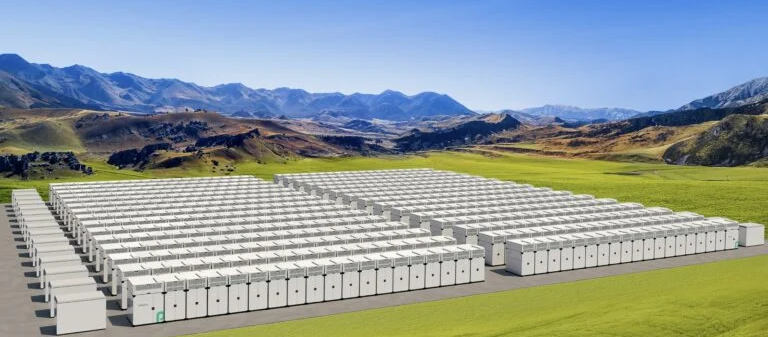The Key Advantages of Battery Energy Storage Systems: Why Businesses Are Accelerating Adoption
As energy volatility becomes the new normal, more commercial and industrial (C&I) operators are turning to battery energy storage systems (BESS) as a strategic asset—not just a backup solution. Users searching for the advantages of battery energy storage systems generally already understand the basics of BESS. What they really want to know is how storage translates into operational resilience, cost reductions, and long-term competitiveness.
This article focuses entirely on the benefits of BESS for business users, based on real operational motivations, energy-management demands, and the economics behind storage adoption.
- Turning Intermittent Renewable Energy Into Reliable Power
Many businesses have already installed or are planning to install rooftop solar or on-site renewable assets. But renewables are variable by nature. BESS solves this by:
- Smoothing solar output fluctuations during cloudy periods
- Shifting daytime solar power to evening peak hours
- Allowing facilities to maximize self-consumption instead of selling surplus energy at low rates
- Supporting microgrid operation when renewable resources are dominant
For energy-intensive facilities—manufacturing plants, logistics centers, cold-chain warehouses—the ability to stabilize renewables directly translates to predictable operations and lower energy dependence on the grid.
- Reducing Peak Demand Charges and Improving Energy Cost Control
One of the biggest financial advantages of BESS lies in its ability to shave peaks and shift loads.
A well-designed C&I storage system allows businesses to:
- Discharge during expensive peak hours
- Charge during low-cost periods
- Reduce demand spikes that trigger punitive tariffs
- Avoid ratchet charges in regions using load-based billing formulas
For large commercial users, peak demand can account for 30–70% of their electricity bill. BESS is often the fastest ROI driver—sometimes enabling payback in under three years.
📘 Recommended Reading:
Battery Storage Peak Shaving: Optimizing Energy Costs for C&I Facilities
https://leochlithium.us/battery-storage-peak-shaving-optimizing-energy-costs-for-ci-facilities/
- Ensuring Business Continuity During Grid Outages
In North America, power outages caused by weather events, overloaded grids, or aging infrastructure are increasing each year. For data centers, factories, retail chains, and healthcare facilities, even a short interruption can lead to:
- Equipment damage
- Lost perishable goods
- Disrupted operations
- Safety incidents
Modern BESS provides instant response time, seamless transfer, and—unlike generators—silent operation without exhaust fumes.
While generators remain useful for multi-day outages, BESS covers the crucial first minutes or hours where many losses traditionally occur.
- Improving Power Quality and Equipment Protection
Beyond outages, poor grid quality is a silent cost driver. Voltage dips, frequency instability, and harmonic distortion cause premature equipment wear and downtime.
A BESS enhances power quality by:
- Stabilizing voltage
- Correcting frequency
- Absorbing or mitigating surges
- Reducing stress on sensitive equipment such as CNC machinery, servers, HVAC systems, and industrial automation lines
These improvements help companies protect high-value assets and reduce unscheduled maintenance.
- Flexibility, Modularity, and Fast Deployment
Modern C&I BESS solutions are modular and scalable. Businesses can start with a small system and expand as energy requirements grow.
Typical advantages include:
- Standardized cabinet or containerized formats
- Faster permitting and installation
- Scalable from kWh to multi-MWh
- Compatibility with solar, generators, and microgrids
For many companies, the ability to phase investment is essential for budget planning and incremental optimization.
🔗 Application Example:
To see what modular C&I systems look like in real deployments, explore this solution:
👉 Outdoor Cabinet Air-Cooling Energy Storage System
https://leochlithium.us/outdoor-cabinet-air-cooling-energy-storage-system/
(Inserted here because the topic discusses modularity and scalable deployment—this placement is natural and not overly promotional.)
- Supporting Corporate Sustainability and ESG Goals
More enterprises in the U.S. now measure carbon reduction not just as compliance—but as business value.
BESS helps companies:
- Increase renewable energy utilization
- Reduce reliance on diesel or gas generators
- Lower carbon intensity of operations
- Provide measurable ESG metrics for investors or procurement partners
This is especially relevant for logistics, retail chains, and industrial firms supplying large corporations with strict sustainability requirements.
- Enhancing Grid Services and Revenue Opportunities
Advanced BESS systems allow businesses not only to save money—but potentially earn revenue through participation in grid programs (depending on state and utility structure):
- Frequency regulation
- Capacity markets
- Demand response
- Volt/VAR support
- Community or virtual power plant (VPP) participation
Not every region supports all services, but where available, these programs can significantly accelerate ROI.
📘 Recommended Reading:
BESS Cooling Systems: Why Thermal Management Shapes the Future of Energy Storage
https://leochlithium.us/bess-cooling-systems-why-thermal-management-shapes-the-future-of-energy-storage/
(Recommended because users interested in BESS advantages often want deeper technical understanding of system reliability, safety, and lifecycle.)
Conclusion: BESS Has Become a Strategic Advantage, Not a Technical Option
For commercial and industrial users, the advantages of battery energy storage systems extend far beyond emergency backup power. From reducing operational costs to optimizing renewable integration and enhancing resilience, BESS is now a core pillar of modern energy strategies.
As power uncertainty grows and energy economics shift, businesses leveraging storage today will be better prepared for tomorrow’s energy challenges—while gaining a competitive edge that traditional infrastructure alone can’t deliver.


